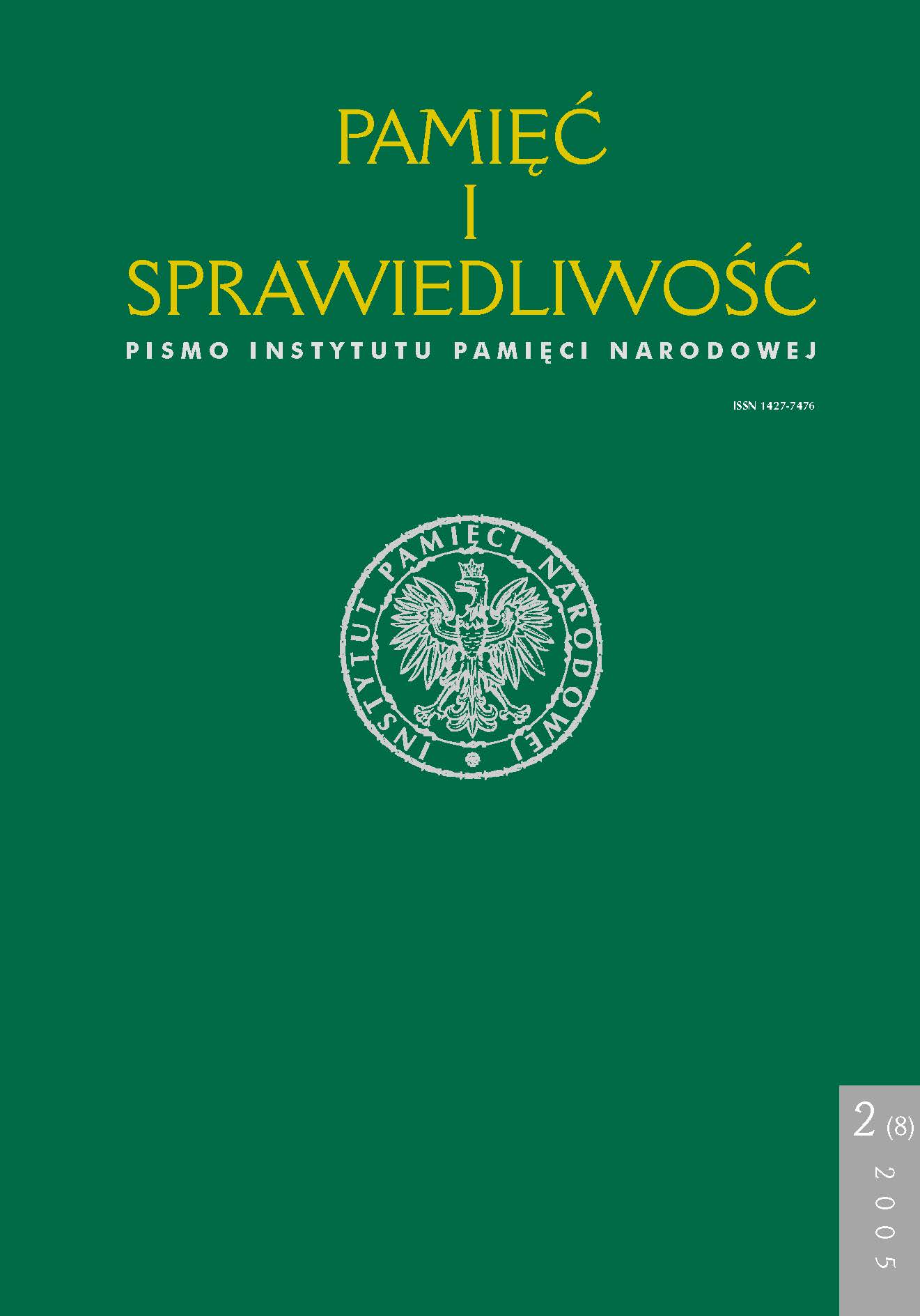Przyczynek do wojennych dziejów Ukraińskiego Legionu Samoobrony (1943–1945)
Pamięć i Sprawiedliwość, Tom 8 Nr 2 (2005), strony: 295-327
Data publikacji: 2005-12-30
Abstrakt
In 1940 the Organization of Ukrainian Nationalist (OUN) split into two (mutually) hostile factions, one headed by Stepan Bandera that came to be known as OUN-B and the other by Andriy Melnyk (OUN-M). The competition between them intensified after Germans had invaded the USSR on 22nd of June 1941. Following a shift in the German ethnic policy and increasing repressiveness towards the Ukrainians, both factions began to create their own military structures. In 1943, probably, the executives of the OUN-B decided to subordinate the military units of the OUN-M. In July 1943 the guerrilla squads of the OUN-M were forced to join the Banderites’ Ukrainian Partisan Army (UPA). Some of the Melnyk’s soldiers who evaded it asked the Third Reich for support. As a result of negotiations the Ukrainian Self-Defence Legion (ULS), also called the 31st SIPO Auxiliary Battalion was formed. To be precise, it was created in early autumn 1943 under an agreement
between the SD in Luck and the local command of OUN-M. At the beginning the ULS was to fight Soviet guerillas and Polish self-defence units. However, it was soon converted into a kind a police unit, which was often used for pacification. At the beginning of 1944 the ULS was developed into an independent battalion. In the middle of 1944 it consisted of 5 front-line sotnyas (companies). The Legion was closely related to the OUN-M although the Germans replaced the fallen officers mainly with Petlura’s soldiers. The ULS had its own political command, but as time passed, its influence on the soldiers was more and
more limited by the SD officers, who served in the squad. The military command of the unit was Ukrainian but, at the same time, the commander-in-chief was German (it was strictly subordinated to the German commander-in-chief).
At first the ULS fought against the Soviet partisan and the Polish 27th Infantry Division of Home Army (AK) in Volhynia, for the next half a year it was garrisoned in the region of Hrubieshov, where it struggled with the Bataliony ChΠopskie and AK units and pacified
Polish villages. In the end of July 1944 it was redeployed to the north of Cracov, where it also participated in military actions against the civilian population and the Polish underground movement. In September 1944 the group of Col. Diaczenko suppressed the Warsaw Uprising and secured the area of the Kampinos forest. At the beginning of 1945 the battalion appeared in Slovakia and was next moved to Slovenia to fight against the Tito’s partisans. Growing dissatisfaction caused by German reluctance to fight for Ukraine led some of the legionaries (soldiers) to desertion. After having been incorporated to the
14th Grenadier Division of the Waffen SS, the ULS’s combat story finished.
 Język Polski
Język Polski
 English
English
 Deutsch
Deutsch
 Français (France)
Français (France)
 Italiano
Italiano
 Русский
Русский


 PDF
PDF
